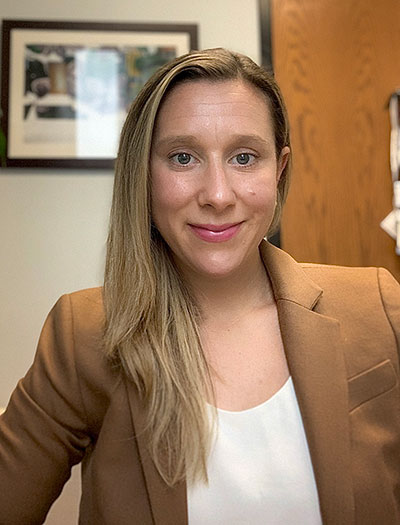Severe mental illness can shorten a person’s life by as much as 25 years compared to the rest of the population, according to Elizabeth Matthews, Ph.D., assistant professor at the Graduate School of Social Service.
The reasons why are not a mystery. People suffering from mental illness are more likely than others to have severe medical conditions that are undertreated or untreated altogether.

Thanks to a grant from the Robert Wood Johnson Foundation, Matthews is embarking on a major study to determine how best to address the role of mental illness in physical health care.
The Health for Data Action Award will fund the study “Delivering Integrated Care for Individuals with Serious Mental Illness and Chronic Disease: Examining the Potential of FQHCs,” for which Matthews is the principal investigator. It will allow her and colleagues from Long Island University, the University of Pennsylvania, and New York University to analyze data collected from 1,462 federally qualified health centers (FQHCs). The data features anonymous information about the treatment of 6.3 million individuals between 2016 and 2021. Matthews and her colleagues will examine the data to determine which health centers served their clients best.
Like many of her colleagues in the Graduate School of Social Service, Matthews has focused her research on the ways that technology can be used to advance the field. This study also fits into her larger research agenda of promoting whole-person care for individuals with mental illness.
“There’s kind of an agreement that care is most effective when it’s integrated, which means care is systematically coordinated across disciplines and specialties,” she said.
“The problem is, there are lots of ways to deliver integrated care, and we don’t yet know which one is best for people who have co-occurring and chronic mental health needs.”
One of the most important way these health centers differ from each other is in the way they’re structured, she said. Centers that have coordinated care deliver mental health services and primary care in locations that are physically separate. Centers that have co-located care deliver all care in the same location.
Matthews said that the data, collected by the health care data warehouse firm OCHIN Advance, is extremely valuable because it pairs information about patients’ health outcomes with census data from the area.
“They merge patient-level data with information about the community and the clinic, so you can really understand not only what’s happening at the individual level, but the context in which they’re receiving their care,” she said.
“I think we’ll be able to understand in an innovative and comprehensive way what is working for this high-risk group, and why.”
“Delivering Integrated Care for Individuals with Serious Mental Illness and Chronic Disease: Examining the Potential of FQHCs” began on Dec. 1 and will last a year. Matthews said she expects preliminary results in the summer and a final report in the late fall. Researchers will judge the success of the health centers using clinical quality indicators, such as whether a patient with diabetes is getting glucose readings on schedule. Health outcomes will play a factor as well. They’ll examine questions like, if a patient takes their medicine, does their condition actually improve?
The goal isn’t so much to decide which model of delivery is the best as it is to determine which one works best for a specific population. The general understanding in the field is that more integration is better and having a one-stop-shop where people can walk from their doctor’s office down to the hall to their psychiatrist is better and most effective.
“In some ways, I expect that to be true. However, I also appreciate that there’s a great amount of variation within this population that we’re calling individuals with serious mental illness,” Matthews said.
“There are many different diagnoses and clinical profiles within that group, so I do expect to see some variation that’s going to be really important for us to understand. We can’t just assume that a one-size-fits-all model is going to work for everybody with every type of mental illness.”
Ultimately, Matthews is hopeful that the study will shine a brighter light on the role that these federally qualified health centers play as centers for primary health care, not just places where people with severe mental illness get mental health treatment.
“It’s been the assumption that a group that has chronic mental needs must be treated in a mental health setting. I’m not convinced that that is true. There is little work that has looked at FHQCs in that way,” she said.
One area that the OCHIN data set does not address is how patients feel about their care. Matthews said the question of whether patients are happy and feel cared for is just as important as the two other factors and is an area she’d like to explore going forward.
“It’s hard to get data where get you everything all at one time because that requires more time-intensive work to get in touch with individuals and talk to them. It’s a different type of measurement that’s not always available in such a large aggregate form,” she said.
“The tradeoff is, we’re getting really generalizable results, which is something that is really valuable. It does give us somewhere to go next on this research.”


